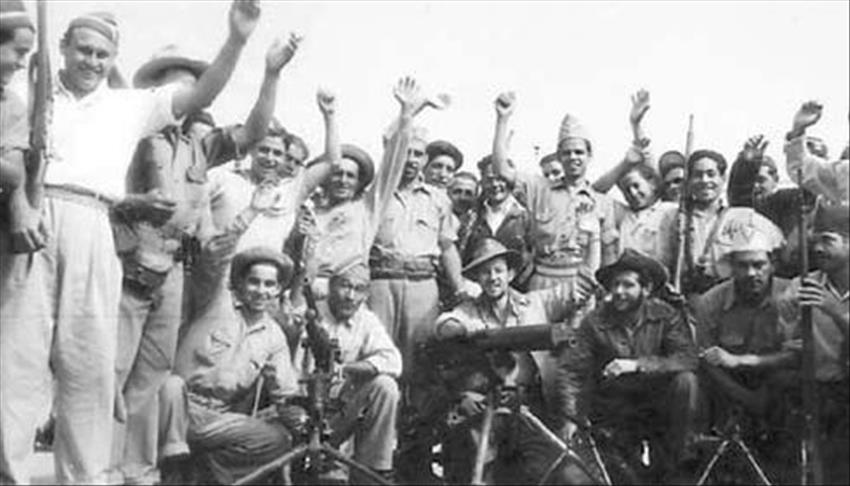December 1, 1948, marked a major turning point in the history of Costa Rica, a Central American country known for its political stability, commitment to peace, and demilitarization. On this specific date, Costa Rica made a bold and revolutionary decision to abolish its army, a decision that profoundly shaped the national identity and defined the course of its future development.
The historic event took place at Cuartel Bellavista, formerly a symbol of the country’s military power but now housing the National Museum of Costa Rica. On this occasion, President José Figueres Ferrer, who led the Founding Council of the Second Republic, took a sledgehammer and symbolically knocked down a wall of the cuartel. This solemn and powerful act marked the official abolition of the National Army, symbolizing Costa Rica’s transition from a militarized nation to one focused on human development and peace.
José Figueres Ferrer expressed the significance of this decision by stating, « I took a sledgehammer to bring down a wall of Cuartel Bellavista to symbolize the elimination of the vestige of Costa Rica’s military spirit from another era. I returned the building to house an anthropology museum that continues to radiate culture today. » This courageous decision marked the beginning of a new era for Costa Rica.

The abolition of the army as a permanent institution had an extraordinary impact on the country. It redirected financial and human resources that were once devoted to the military towards essential sectors such as healthcare, education, and culture. Costa Rica thus committed to investing in the well-being of its population and developing a society based on justice and education.
Ticos celebrate the abolition of the army in 1948 This decision also had positive repercussions on a global scale, making Costa Rica a unique example in Latin America. While many countries in the region were plagued by military conflicts and authoritarian regimes, Costa Rica stood out for its commitment to democracy and peace.
Costa Rica’s decision demonstrates that peace and development are worthwhile goals, even if it means abandoning traditional military structures. This is a valuable lesson for the entire world, and Costa Rica deserves to be celebrated for this historic decision.
José Daniel Cordero, a Costa Rican from Puerto Jiménez
Following the abolition of the army, responsibilities for internal security were entrusted to the Civil Guard, a newly created force that gradually assumed the role of maintaining public order. This transition continued over the decades, leading to the creation of the General Police Law in 1994, aimed at professionalizing the police forces and enhancing the country’s security.
In the 1940s, the country experienced episodes of intense political violence, which led to a civil war in 1948. At the end of this conflict, in the same year, José Figueres Ferrer’s government disbanded the armed forces, and in 1949, this decision was enshrined in the political constitution.
This measure had economic benefits as well. This was revealed in a study by the Development Observatory of the University of Costa Rica titled « Farewell to Arms: The Long-Term Effects of Abolishing the Army in Costa Rica on Development. »
Between 1920 and 1949, Costa Rica’s GDP increased at an average annual rate of 1.31%. From the abolition onward, over the following 60 years, from 1951 to 2010, the average growth rate increased to 2.44%.
This positioned Costa Rica as the country in the region with the second-highest growth rate during this period, surpassed only by Brazil with a GDP growth rate of 2.53%, and the one that increased this rate the most between these periods, as highlighted in the report.
But that’s not all. According to researchers Alejandro Abarca and Suráyabi Ramírez, in addition to impacting per capita GDP growth, this measure prevented the reversal of the social and institutional reforms of the 1940s, « allowing the country to enjoy exceptional and unique political stability in Latin America. »
Since 1951, in Latin America, there have been over 97 coup attempts, 21 episodes of political violence, 134 episodes of civil violence, and 35 episodes of ethnic violence, while Costa Rica has experienced only one unsuccessful coup attempt in 1955.
Costa Rica commemorates this historic event every year on December 1, celebrating a major milestone in its pursuit of peace, stability, and development. The 1949 constitution formally enshrined the abolition of the army, marking the beginning of an era of progress and prosperity based on education and culture.
In conclusion, Costa Rica’s abolition of the army in 1948 remains an inspiring example of how a nation can make bold decisions to shape its future.
It allowed Costa Rica to become a beacon of peace and development in Latin America, emphasizing the importance of building a society based on humanitarian values rather than military power.

- L’aéroport Juan Santamaría de San Jose se prépare pour une haute saison record
- Le dollar atteint son plus bas niveau en 17 ans au Costa Rica
- Guanacaste: Major Renovation Begins on the Tempisque River Bridge
- Guanacaste : début des travaux majeurs sur le pont du río Tempisque
- Ottawa–Liberia: Porter Airlines Prepares a Direct Flight to Costa Rica



1 commentaire
Yes, it’s true. Plus, they signed an agreement with America to come to their aid from any foreign enemy.